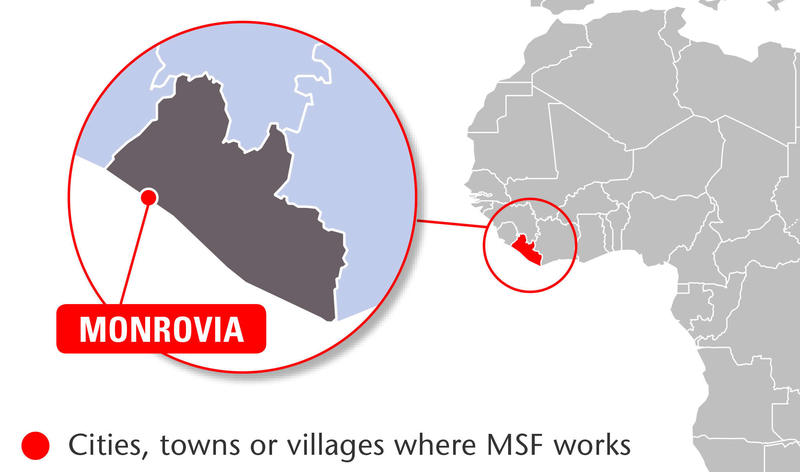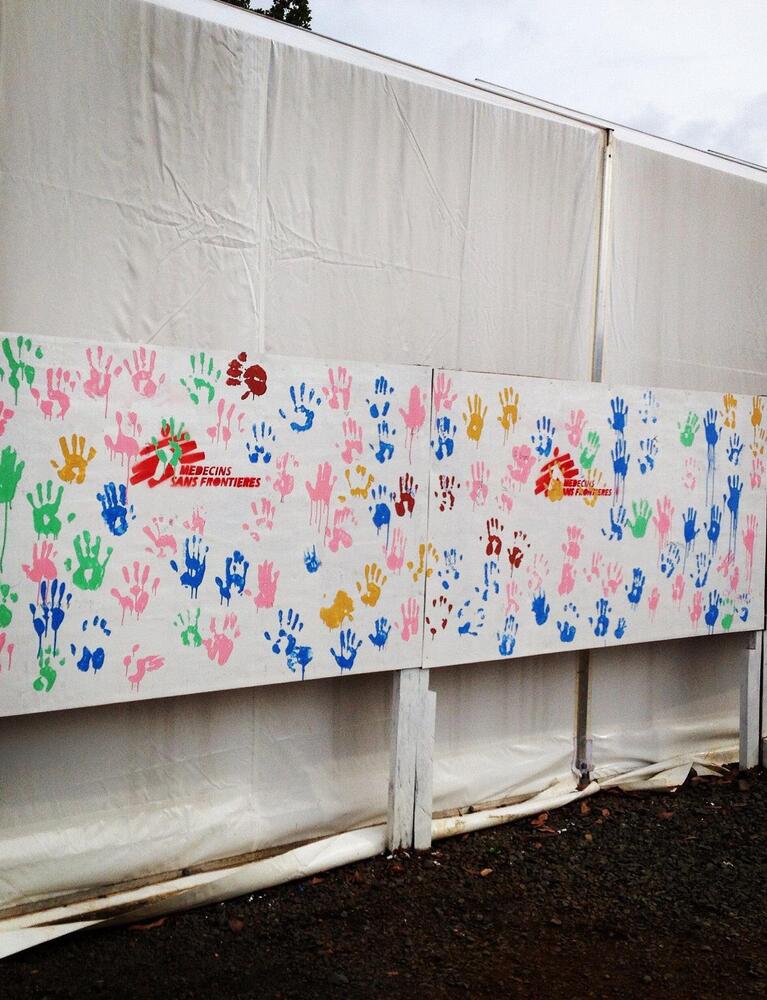Despite being a country of historic firsts, Liberia is sadly known for disastrous humanitarian emergencies.

The West African country, home to just over four million people, is the continent’s oldest republic and the first African country to elect a female head of state.
But, along with Sierra Leone and Guinea, Liberia was pushed to the forefront of the world stage in 2014 as the devastating Ebola outbreak spiralled out of control. The outbreak came at a time when people were just beginning to put the catastrophic civil war behind them.
Médecins Sans Frontières/Doctors Without Borders (MSF) first began working in Liberia in 1990 in response to the civil war, which killed more than 250,000 people between 1989-2003.
[[Country-Facts]]
MSF’s work in Liberia: 2015
The Ebola epidemic in Liberia was almost over in 2015, but the country still needs support to deal with any new outbreaks that occur and to help rebuild the health system.
The health situation in Liberia was precarious even before the Ebola outbreak, but the country was brought to its knees by the epidemic. Many hospitals closed in 2014 and have not yet reopened, and it is estimated that eight percent of health workers in the country died from the virus, while others have never returned to work.
MSF is supporting the Ministry of Health to improve access to healthcare.
Ebola response
Liberia was declared Ebola free in May 2015, but new cases were reported in July and November. As part of the Ministry of Health’s national plan, we organised training sessions for Rapid Isolation and Treatment of Ebola teams in four districts of the country, and in certain health centres in Monrovia supported the improvement of infection prevention and control measures by, for example, setting up isolation areas.
In March, MSF handed over an Ebola transit unit in Monrovia to the International Rescue Committee, and in May, the Ebola management centre (EMC) to the Ministry of Health. During the first few months of the year, the transit unit team diagnosed patients, and isolated and referred them to an EMC if necessary; 81 patients were triaged and seven were diagnosed as having Ebola.
Pierre Trobovic discusses his time in ELWA 3, the world's largest Ebola centre, on our Everyday Emergency podcast.
Ebola survivor care
It is estimated that there are around 1,000 Ebola survivors in Monrovia and Montserrado County, who suffer from joint pain and eye problems and also have to contend with being ostracised by their community.
We therefore opened a survivors’ clinic in Monrovia in January, which currently provides outpatient and mental health consultations, and referrals to more than 500 people. In addition, the team treats patients who do not have certificates from EMCs and so are not formally identified as survivors; these people have even more difficulty accessing medical care.
Paediatric care in Monrovia
It is estimated that 17 percent of Monrovia’s population of 1.4 million are aged under five. As paediatric wards and hospitals closed during the Ebola outbreak, MSF opened the 74-bed Bardnesville Junction paediatric hospital in April to try and address some of the subsequent gaps in specialised care for young children.
[[Article-CTA]]
The facility comprises a 10-bed intensive care unit, an emergency room, a neonatal unit, a therapeutic feeding centre and an inpatient ward. At the end of the year, the capacity of the hospital was increased to 91 beds.
Measles response
A measles outbreak was declared in Monrovia at the beginning of 2015, and in March we organised a two-day vaccination campaign in Peace Island district which reached 542 children.
Find out more in our 2015 International Activity Report




